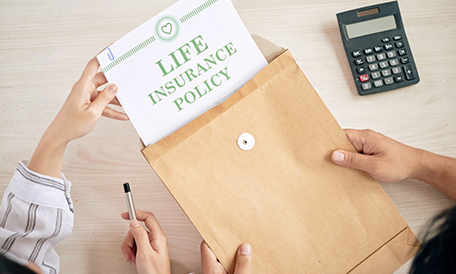
Are you fully insured? 8 ways to make sure
Get both life and general insurance for complete protection
General insurance protects your health and your assets, with products like health insurance for family and self, home insurance and motor insurance. Life insurance provides for your family in the event of your demise, with products like term insurance, whole life insurance etc. Having products of both kinds will give you complete protection from all eventualities.

The 3 must-have insurance covers
Health insurance, life insurance and motor insurance are the three essential covers - they cover the biggest financial risks you face and also help you comply with the law (in the case of motor insurance).

Beware of rising expenses and inflation
Ensure the coverage amount is aligned to your changing lifestyle needs and can provide complete protection even after factoring in inflation. It may help to opt for plans that increase the amount of coverage for every non-claimed year to cover these rising costs.

Life insurance should be 10-12 times your income
You need to make robust plans for your family’s needs in the event of your demise. As a rule of thumb, opt for a term plan with a sum assured equalling at least 10-12 times your annual income2 to ensure they will be provided for well into the future.

Know your HLV
You can use online calculators to assess your Human Life Value, or HLV, for precise life insurance planning. This is also known as the income replacement method. It attaches a monetary value to an insured's life, by assessing the financial loss a family would face if the insured were to die, and thus the amount of insurance coverage they need.

Coverage should equal market value
Your policy coverage should reflect the market value of the insured asset. If the amount covered is below the market value of the asset, the asset is under-insured. But you shouldn’t overdo it either – if the coverage is above the market value, you might face problems while filing for claims. Try to get just the right amount of coverage.

Cover for your retirement
Pension plans or retirement savings plans ensure you get a fixed income for the rest of your life after retirement. These policies serve as a kind of insurance for your lifestyle even when your income stops or recedes.

Savings should be ring-fenced in emergencies
The most important role of an insurance policy is to protect your savings and assets in the event of financial setbacks. Insurance helps you deal with setbacks without dipping into your savings, which should be preserved for specific needs. Thus, it’s important to accurately estimate the probable losses and ensure the coverage matches that amount, to avoid depletion of savings or assets.

Review your insurance portfolio regularly and make sure you have the coverage you need. If you spot any asset that is under-insured, upgrade your coverage immediately – prevention is always better than cure.
Source links:
1. https://www.ibef.org/industry/insurance-sector-india.aspx
2. https://www.livemint.com/money/personal-finance/four-methods-to-calculate-how-much-term-insurance-you-need-11605023306997.html
All the Mutual Fund investors have to go through a one-time KYC (Know Your Customers) process. Investor should deal only with the Registered Mutual Funds (RMF). For more info on KYC, RMF and procedure to lodge/redress any complaints, visit https://www.pgimindia.com/mutual-funds/ieid.
MUTUAL FUND INVESTMENTS ARE SUBJECT TO MARKET RISKS, READ ALL SCHEME RELATED DOCUMENTS CAREFULLY. Read more








